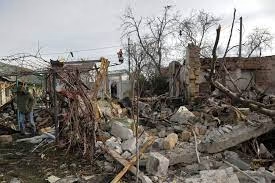North Korean leader Kim Jong-un has intensified his focus on advanced warfare technologies, recently ordering the mass production of suicide drones. These drones, often described as cost-effective yet deadly weapons, can target both land and sea objectives, functioning as guided missiles. The move underscores North Korea’s determination to expand its military capabilities, particularly in unmanned aerial technology, which has become a critical component of modern warfare.
According to North Korea’s state news agency, Kim Jong-un personally oversaw tests of various suicide drones developed by the Unmanned Aerial Technology Complex. His hands-on approach highlights the strategic importance Pyongyang places on drones in achieving military superiority. He emphasized the need for immediate and large-scale production, reflecting his vision of these drones playing a pivotal role in future conflicts.
The Growing Significance of Suicide Drones in Warfare
Suicide drones, also known as loitering munitions, have revolutionized modern warfare. These devices are designed to hover over a battlefield, identify targets, and strike with precision. Their ability to neutralize tanks, vehicles, and other high-value targets at a relatively low cost has made them indispensable in contemporary conflicts.
In recent years, the use of drones has expanded rapidly, with notable examples seen in the ongoing wars in Ukraine and the Middle East. These drones have proven to be game-changers, offering tactical advantages to even resource-constrained militaries. Kim Jong-un’s directive to mass-produce suicide drones indicates North Korea’s intent to leverage this technology to bolster its defense and offensive capabilities.
Kim Jong-un’s Vision for North Korea’s Drone Program
Kim Jong-un has repeatedly emphasized the importance of adopting cutting-edge technologies in North Korea’s defense strategy. During his inspection of the drone tests, he reiterated that drones are not just tools but key assets in modern warfare. By accelerating production, Kim aims to enhance the military’s readiness and effectiveness in potential conflicts.
The drones developed by North Korea are reportedly capable of targeting both land-based and maritime objectives. Their versatility adds significant value to Pyongyang’s military arsenal, allowing them to engage in asymmetric warfare with more advanced adversaries. This aligns with North Korea’s broader strategy of developing cost-effective but impactful solutions to counter technologically superior forces.
North Korea’s Role in Global Conflicts
The development of suicide drones comes at a time when North Korea is increasingly involved in global conflicts. Notably, North Korea has reportedly sent 10,000 soldiers to Ukraine to support Russia, a claim confirmed by NATO, the United States, Ukraine, and South Korea. This development further complicates Pyongyang’s already tense relations with the international community.
North Korea’s support for Russia underscores its alignment with Moscow amid global divisions stemming from the Ukraine war. By providing manpower and potentially drone technology to Russia, Pyongyang aims to strengthen its geopolitical alliances while showcasing its military capabilities on the global stage.
The Risks of Drone Proliferation
The mass production of suicide drones by North Korea raises significant concerns for regional and global security. These drones, designed for precision attacks, could easily destabilize the balance of power in East Asia and beyond. Their potential export to allied nations or non-state actors could further exacerbate global tensions.
Moreover, North Korea’s focus on drones reflects a shift in military strategy, prioritizing advanced technologies over traditional forces. While drones offer cost-efficiency and tactical flexibility, their deployment could lead to unpredictable consequences, especially in conflict zones.
Global Implications of Kim Jong-un’s Directive
Kim Jong-un’s push for mass production of suicide drones is likely to draw criticism and concern from the international community. Countries like South Korea, Japan, and the United States will closely monitor North Korea’s progress in drone technology, as it poses a direct threat to their security interests.
Additionally, this development may prompt other nations to enhance their own drone programs, potentially triggering a regional arms race. The proliferation of unmanned aerial vehicles could escalate tensions, particularly in volatile regions like the Korean Peninsula and the South China Sea.
A New Era of Warfare for North Korea
Kim Jong-un’s directive to mass-produce suicide drones marks a significant shift in North Korea’s military strategy. By investing in advanced unmanned technologies, Pyongyang aims to bolster its defense capabilities while asserting its presence on the global stage.
However, the move also raises critical questions about the implications of such technologies in regional and global security. As the world grapples with the evolving nature of warfare, North Korea’s actions serve as a reminder of the transformative—and potentially destabilizing—power of drone technology.
For now, the international community remains watchful, aware that these developments could redefine the balance of power in East Asia and beyond. Whether this leads to heightened diplomacy or increased tensions will depend on how stakeholders respond to North Korea’s growing focus on advanced military capabilities.



